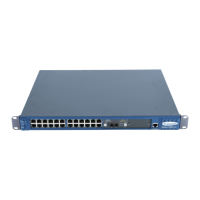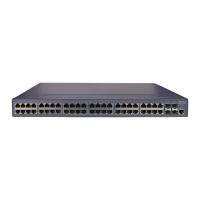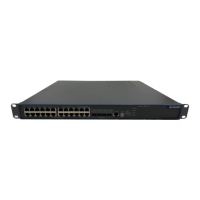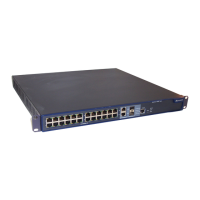Command Manual – Routing Protocol
Quidway S3900 Series Ethernet Switches-Release 1510 Chapter 3 OSPF Configuration Commands
Huawei Technologies Proprietary
3-55
Parameter
route-id: Router ID of virtual link peer.
hello seconds: Specifies the interval, in seconds, at which the router transmits hello
packet. It ranges from 1 to 8192 and defaults to 10. This value must equal the hello
seconds value of the router virtually linked to the interface.
retransmit seconds: Specifies the interval, in seconds, for retransmitting the LSA
packets on an interface. It ranges from 1 to 8192 and defaults to 5.
trans-delay seconds: Specifies the delay, in seconds, for transmitting LSA packets on
an interface. It ranges from 1 to 8192 and defaults to 1.
dead seconds: Specifies the interval, in seconds, of death timer. It ranges from 1 to
8192 and defaults to 40. This value must equal the dead seconds of the router virtually
linked to it and must be at least four times of the hello seconds.
simple password: Specifies the simple text authentication password, which contains up
to eight characters, of the interface. This value must equal the authentication key of the
virtually linked peer.
keyid: MD5 authentication key ID. It ranges from 1 to 255. It must be equal to the
authentication key ID of the virtually linked peer.
key: MD5 authentication key. If you use simple text authentication key, you can input a
string containing 1 to 16 characters. When you use the display current-configuration
command to display system information, the MD5 authentication key is displayed in the
form of cipher text with a length of 24 characters. Inputting the key in the form of cipher
text with a length of 24 characters is also supported.
Description
Use the vlink-peer command to create and configure a virtual link.
Use the undo vlink-peer command to cancel an existing virtual link.
According to RFC2328, an OSPF area must be connected to the backbone network.
You can use the vlink-peer command to keep the connectivity. Virtual link can be
regarded as a common interface that uses OSPF because the principle for configuring
the parameters such as hello, retransmit, and trans-delay on it is similar.
Note that, when configuring virtual link authentication, you use the
authentication-mode command to specify the authentication mode as MD5 cipher
text or simple text on the backbone network.
Related command: authentication-mode, display ospf.
Example
# Create a virtual link to 10.110.0.3 and use the MD5 cipher authentication mode.
<Quidway> system-view
System View: return to User View with Ctrl+Z.

